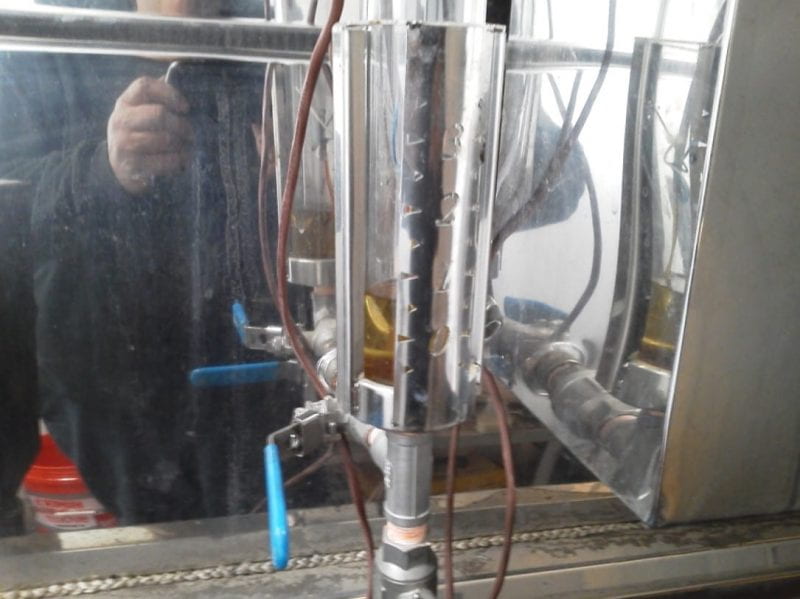In this final post of the evaporator series, we will examine a few remaining factors to account for when considering the boiling process for maple syrup. As you will see, a few instruments enable the necessary precision to ensure a high-quality batch of syrup every time.
In case you missed them, here is Part I, Part II, and Part III of the series.
Barometric Pressure Matters
One of the biggest factors influencing the boil in an evaporator is barometric pressure. Barometric pressure and weather fronts are frequently responsible for the day-to-day erratic behavior in the way sap boils. The boiling rate is directly associated with the barometric pressure on any given day. If you experience a high barometric pressure, sap boils faster; with low barometric pressure, the boil slows. Meteorological shifts can happen several times per day, and whenever pressure fluctuates the boiling point of water (212 F) will vary. Producers must adjust their thermometer to accurately produce syrup consistently at 219 F. Make sure you calibrate your thermometer in boiling water before the start of each boil and throughout the day as needed. A thermometer will give you a ballpark reading, but to get ultra-precise and guarantee 66 Brix syrup of the highest quality, additional instruments should be utilized.
Having the Right Instruments
You will choose one of three instruments to determine your syrup density coming off the evaporator. Only one is the best and most accurate for reading syrup straight off the evaporator. As previously stated, syrup’s finishing point is 219 Fahrenheit, 7 degrees above the boiling point of water. Because barometric pressure influences boiling point, using only a thermometer can result in inconsistent finished syrup density. One better option is to use a refractometer, but the syrup sample has to be temperature-stable and filtered to get an accurate reading. For this reason, we do not recommend using a refractometer on syrup coming directly off the evaporator for obvious and practical reasons. (Refractometers are, however, the instrument of choice for measuring the density of cooled and filtered syrup during canning).
The most recommended instrument to determine the density of hot finished syrup is the hydrometer. A hydrometer should be floated in a sample of finished syrup that is at least 211 degrees F. Hydrometers have two lines, one for cold and one for hot. You will use the hot line for your syrup density determination straight off the evaporator. Bring the instrument up to eye level or set it on a stable object close to eye level for the most accurate reading. The hydrometers red line should float even with syrup level in the container. Most hydrometers also have two scales, one for Brix and one for Baume (Baume measures specific gravity of a solution). The Brix scale is the most popular and frequently used today. Avoid letting scale build up on the outside of the glass as it will impact the density reading, and producers should regularly validate their hydrometers for accuracy. Once you confirm finished syrup of the proper density, you will filter your syrup for clarity and to remove niter. You can then use a color comparator to determine the grade of your syrup.
Conclusion
The evaporator has become the center piece of many maple operations. It is the first thing visitors see in your sugarhouse no matter what time of year they visit. It is also one of the most essential pieces of equipment in your operation. After all the process of making syrup requires that we must heat maple sap to 7 degrees above the boiling point of water to produce pure maple syrup. This results in the caramelization of maple sap into maple syrup. The addition of heat to maple sap results in the amber color we desire and the maple flavor we love.






